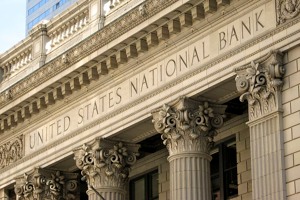Tavex uses cookies to ensure website functionality and improve your user experience. Collecting data from cookies helps us provide the best experience for you, keeps your account secure and allows us to personalise advert content. You can find out more in our cookie policy.
Please select what cookies you allow us to use
Cookies are small files of letters and digits downloaded and saved on your computer or another device (for instance, a mobile phone, a tablet) and saved in your browser while you visit a website. They can be used to track the pages you visit on the website, save the information you enter or remember your preferences such as language settings as long as you’re browsing the website.
| Cookie name | Cookie description | Cookie duration |
|---|---|---|
| tavex_cookie_consent | Stores cookie consent options selected | 60 weeks |
| tavex_customer | Tavex customer ID | 30 days |
| wp-wpml_current_language | Stores selected language | 1 day |
| AWSALB | AWS ALB sticky session cookie | 6 days |
| AWSALBCORS | AWS ALB sticky session cookie | 6 days |
| NO_CACHE | Used to disable page caching | 1 day |
| PHPSESSID | Identifier for PHP session | Session |
| latest_news | Helps to keep notifications relevant by storing the latest news shown | 29 days |
| latest_news_flash | Helps to keep notifications relevant by storing the latest news shown | 29 days |
| tavex_recently_viewed_products | List of recently viewed products | 1 day |
| tavex_compare_amount | Number of items in product comparison view | 1 day |
| Cookie name | Cookie description | Cookie duration |
|---|---|---|
| chart-widget-tab-*-*-* | Remembers last chart options (i.e currency, time period, etc) | 29 days |
| archive_layout | Stores selected product layout on category pages | 1 day |
| Cookie name | Cookie description | Cookie duration |
|---|---|---|
| cartstack.com-* | Used for tracking abandoned shopping carts | 1 year |
| _omappvp | Used by OptinMonster for determining new vs. returning visitors. Expires in 11 years | 11 years |
| _omappvs | Used by OptinMonster for determining when a new visitor becomes a returning visitor | Session |
| om* | Used by OptinMonster to track interactions with campaigns | Persistent |
| Cookie name | Cookie description | Cookie duration |
|---|---|---|
| _ga | Used to distinguish users | 2 years |
| _gid | Used to distinguish users | 24 hours |
| _ga_* | Used to persist session state | 2 years |
| _gac_* | Contains campaign related information | 90 days |
| _gat_gtag_* | Used to throttle request rate | 1 minute |
| _fbc | Facebook advertisement cookie | 2 years |
| _fbp | Facebook cookie for distinguishing unique users | 2 years |
Isn't Inflation Over? USA's Biggest Price Jump in 7 months

According to the US Bureau of Labor Statistics (BLS), US inflation rose to a seven-month high in March. It seems that the price increase may not be as temporary as many economists have predicted.
The BLS reported that US consumer prices (consumer price index, CPI) rose 3.5 percent in March from a year ago. This is the 37th consecutive month that inflation has exceeded the Federal Reserve’s arbitrarily set 2 percent target for inflation rates.
In a monthly comparison, prices increased by 0.4 percent last month. The price increase mainly reflects the short term increase in food, services, electricity and utility costs. The price of fuel rose by 1.3 percentage points, but the price of electricity rose by 5 percent.
Several indicators continued to grow very rapidly. For example, car insurance became more expensive by 22 percent over the year, car repair rose by 11.6 percent, and transportation costs increased by 10.7 percent. The price of medical services increased by 7.5 percent.
After the numbers were released on Wednesday evening, the likelihood that the Federal Reserve will start cutting interest rates in the summer also fell in the eyes of investors. While on Tuesday the probability of a June interest rate cut was estimated at 57 percent, on Wednesday it fell to 17 percent, according to CME FedWatch data. Now it is seen that the interest rate cut will come at the September meeting instead in the United States.
Gold Initially Declined but Rebounded to Record Highs the Following day

It is very interesting that the price of gold initially reacted to the news with a drop of almost 1 percent, but recovered strongly the very next day and has reached new records – 2376 dollars per ounce.
Over the past year, a higher-than-expected inflation number has traditionally weighed on gold as it delays interest rate cuts by the Federal Reserve. Higher interest rates also tend to keep government bond yields high, which reduces the attractiveness of gold compared to bonds.

At the same time, there is also a trend where gold is no longer affected so much by the real yield of bonds (the yield from which inflation has been deducted). Typically, when real yields are rising, gold tends to depreciate and vice versa. This means that gold is breaking ties with Treasuries and the dollar.
It is also interesting that high inflation accelerated at a time when the amount of money in the US economy continues to decline year-on-year. At the same time, we can see that the amount of money has increased by 1.7 percent since October.
The graph below shows the amount of US M2 money (base money, deposits with maturities of up to two years, and deposits with maturities of up to three months). In the current monetary system, this indicator must grow in the long term, otherwise we may end up in a deflationary spiral.
A Second Wave of Inflation?
In the broader picture, such developments are also logical. In the long term, the price of gold is still most affected by the rate of decline in the purchasing power of currencies, national debts and budget deficits. Investors are increasingly realising that government bonds are no longer a safe asset and that the 40-year cycle of bond appreciation and its related economic growth (when bond prices rise, yields fall and vice versa) is over.
A second wave of inflation is likely to be expected soon
Long-term indicators strongly support this forecast, stemming from the substantial injection of money into the economic system following the aftermath of the COVID-19 crisis. Notably, raw material prices have initiated a sustained upward trajectory, compounded by global trends towards de-globalisation and a tightening labor market. Moreover, future economic downturns are poised to prompt further monetary stimulus and an increase in government spending. Compounding these factors, the towering levels of national debt incentivise governments to mitigate their real burden by fostering inflationary pressures.
At the same time, before that, we may even see a temporary slowdown in price growth, because several factors point to the coming of an economic recession. This is indicated by several economic indicators as well as the inversion of the interest curve. In a recessionary environment, it is natural for inflation to slow down significantly. At the same time, it is unlikely that we will see a fall in the overall price level, or deflation.
Conflicting Messages

Of course, the US government and many economists believe that the specter of inflation is now over and we won’t see the next wave.
US President Joe Biden said they had “dramatically” reduced price inflation
He also stated that “we are in a better position now than when I became president“. This statement could be considered incorrect because inflation was 1.7 percent per year at the beginning of Biden’s presidency.
Also, in the first half of 2021, both Fed Chair Jerome Powell and Biden stated that the acceleration of inflation is nothing significant and that it is “temporary”. After that, we saw the highest inflation in the US and the Western world as a whole in 40 years (including UK inflation)
The Biden administration said in January that input prices have come down, but that retailers are not cutting prices and making higher profits instead. This message was aimed primarily at grocery chains.
Our message is very clear, if you’re a company whose input prices have fallen and you don’t pass that fall on to the consumer, the consumer will vote with their feet
said Jared Bernstein, chairman of Biden’s economic council
Specific companies were not named. However, if you look at the profit margins of major retail chains, they are about the same as before the coronavirus pandemic.
Biden has also previously accused energy producers of greed for profit.
However, behind the wave of inflation, there are much bigger processes and it is largely caused by the governments and central banks themselves. During the massive money printing that started after the outbreak of the corona crisis, the mass of both dollars and euros was increased sharply.
In the long term, in addition to money printing, inflation is also driven by the previously mentioned basic trends – rising prices of raw materials, rising labor costs, de-globalisation and record levels of debt.

















